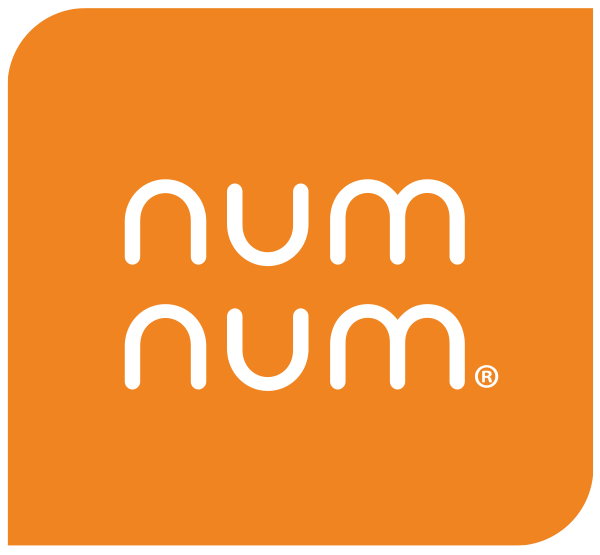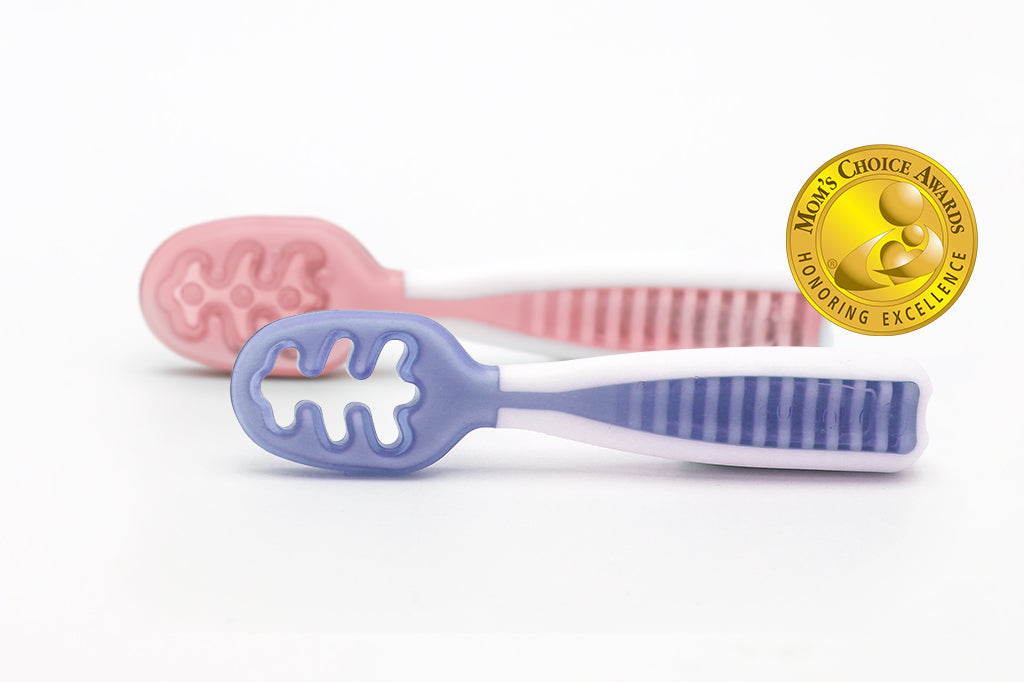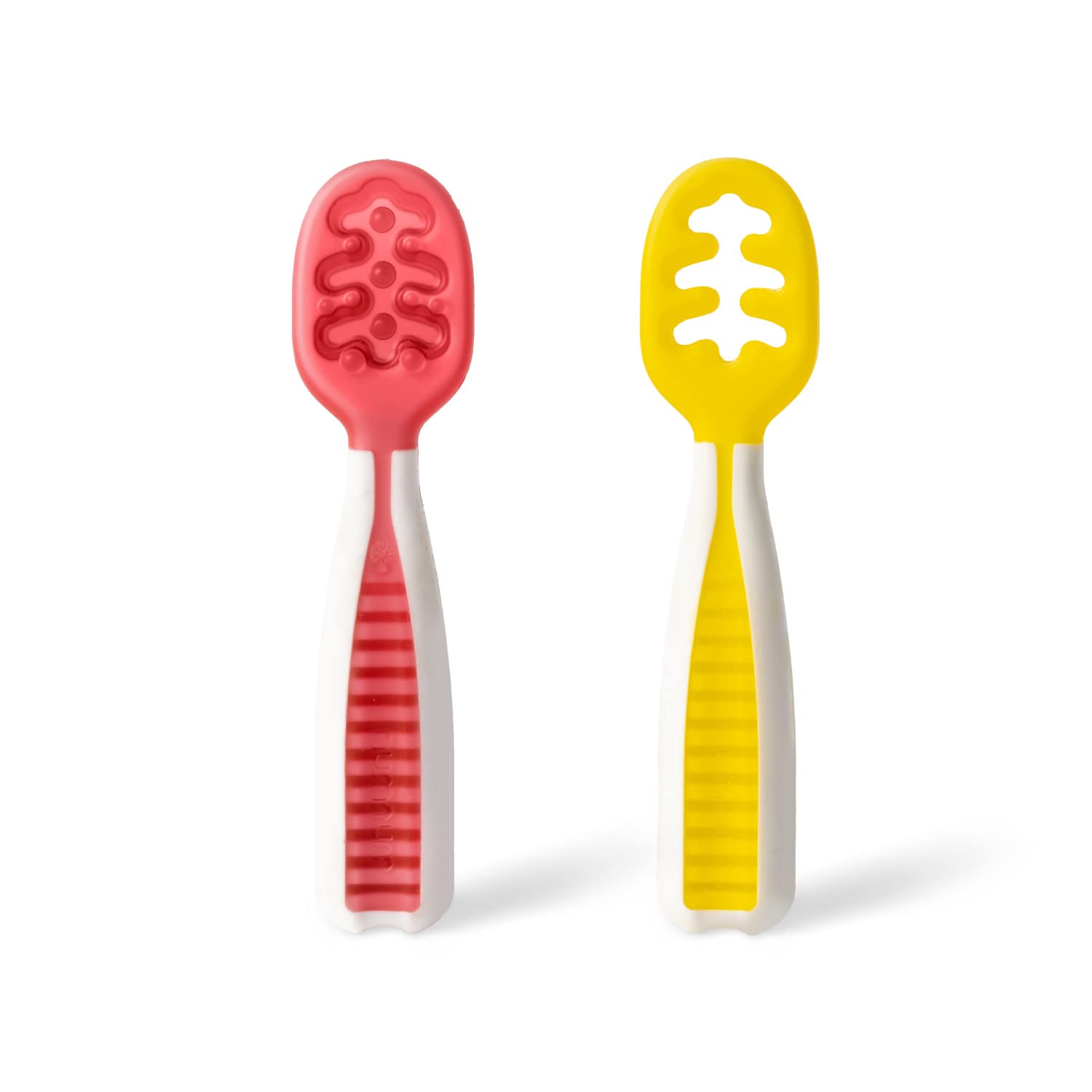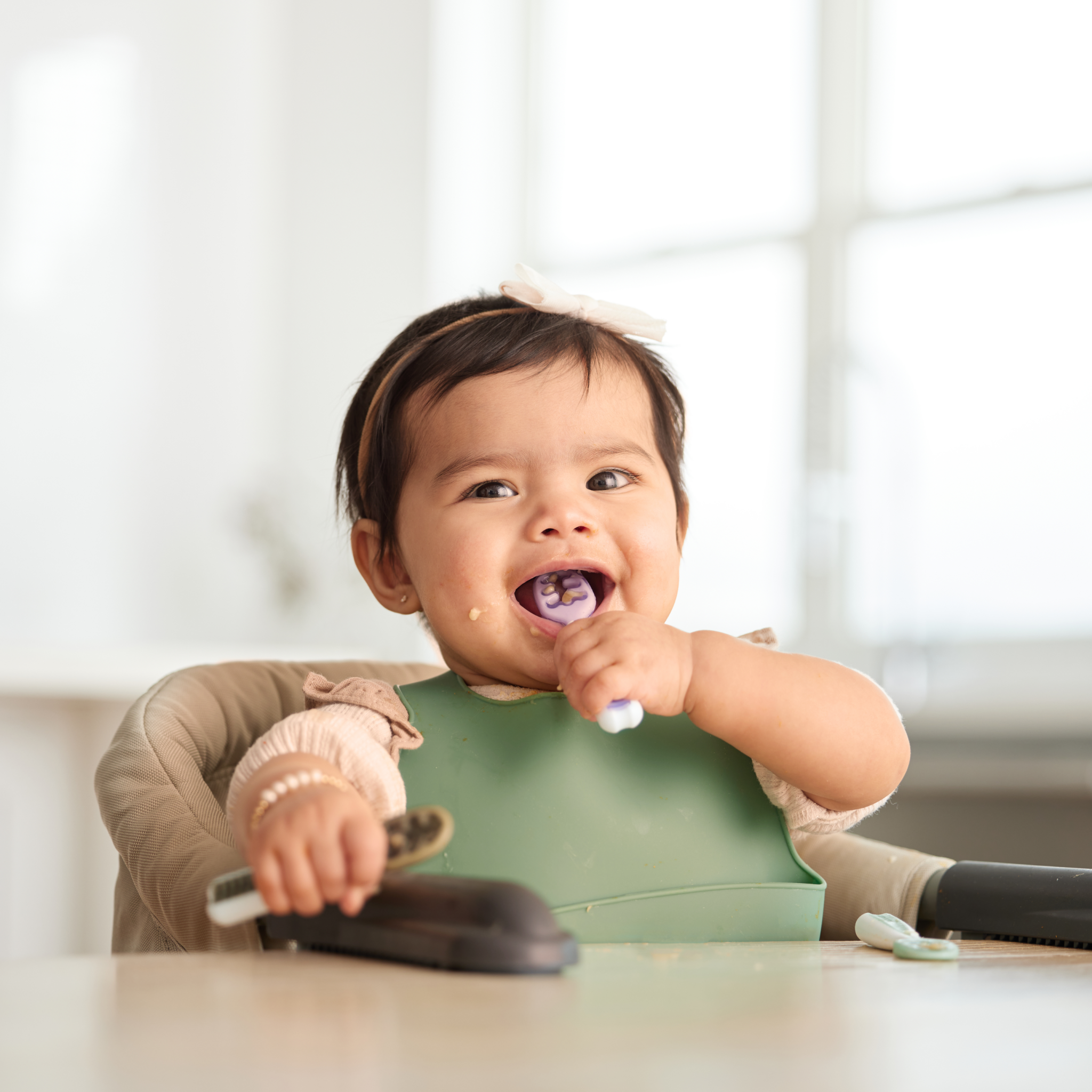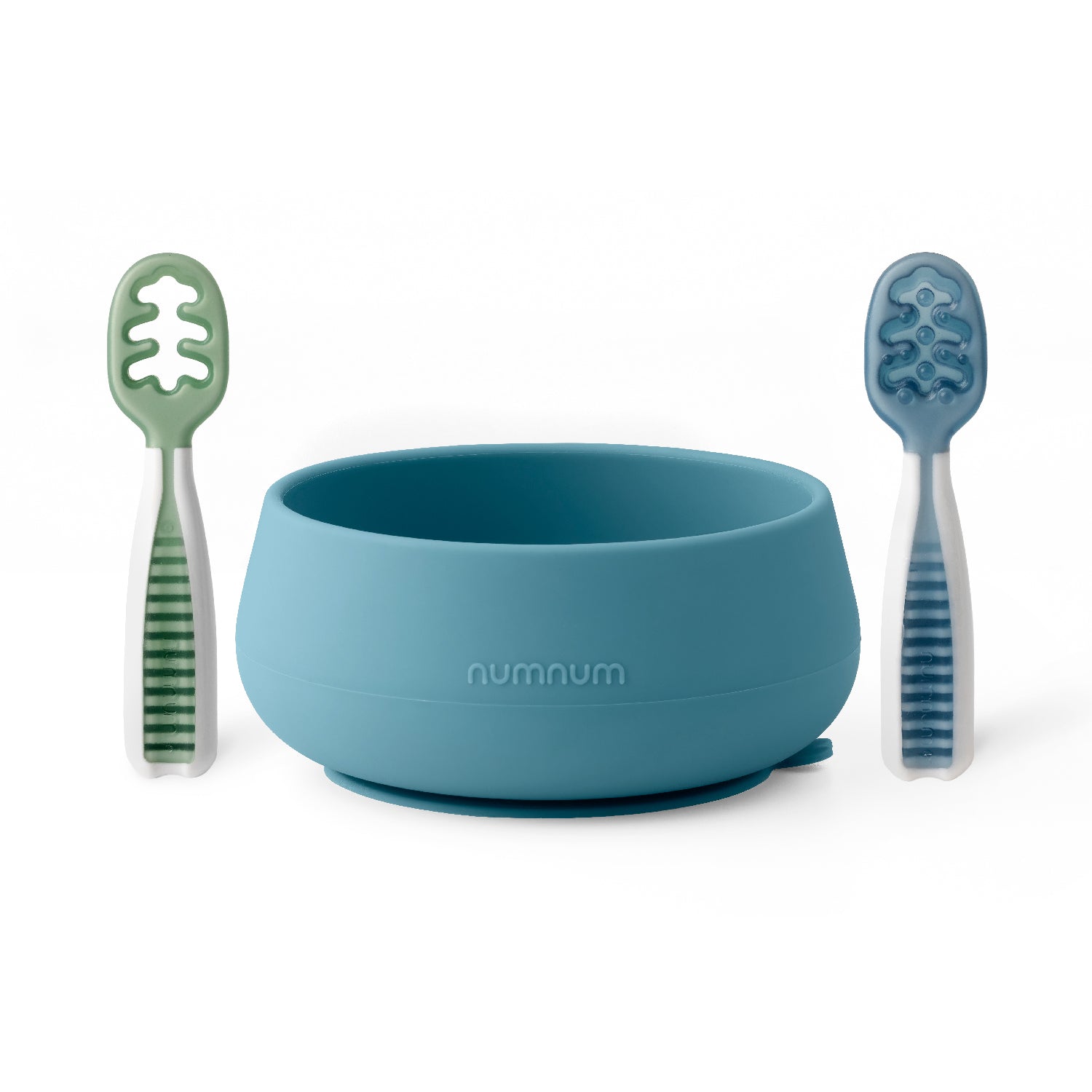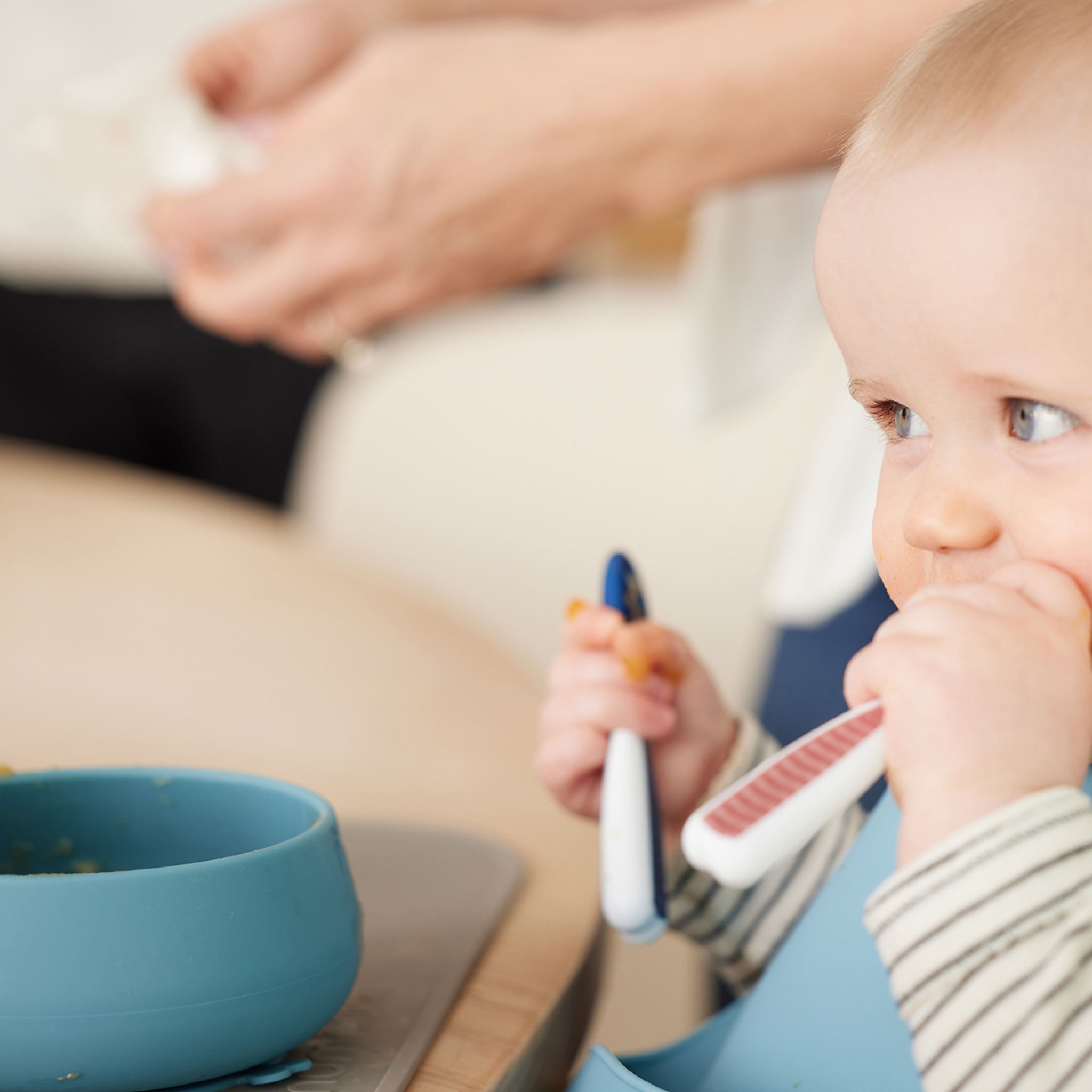Starting utensils is a huge step for baby and parents. Over the past four years, Jess and I have had the opportunity to discuss this challenging stage with several pediatric feeding specialists. While I am not an expert, I thought I would take a few minutes to share what we’ve learned. Here are a few questions we hear parents ask about starting their little one on utensils.
Is My Child Ready for a Spoon?
If he/she is older than 6 months, is able to support his/herself without help, and has expressed an interest in self-feeding, i.e. they reach for the spoon they’re being fed with, they’re probably ready to dabble with a utensil. Curiosity is a key driver behind early learning so if they’re eager, let them give it a try.
So Many Baby Spoons! What’s the Difference?
That wall of spoons can be overwhelming. But it’s fairly easy to separate them into three broad categories. Spoons with extra long handles and small, shallow bowls are for parents to spoon-feed a child. Spoons with shorter handles and small bowls (or flat with no bowl at all!) are made for baby to feed themselves. Spoons with larger head sizes and deeper bowls are for toddlers with more advanced skills.
What’s the Right Spoon to Begin With?
If your child is under 18 months, chances are they haven’t developed wrist rotation and will not be able to maneuver a regular spoon, no matter how hard they try. A pre-spoon or training spoon is best in this situation. There are several great products on the market that address the no-wrist-rotation issue in different ways. Most of these products have a curved neck or a flat head with no bowl or a very shallow bowl. There are several great options on the market, including the Sassy Less Mess Toddler Spoons, the Chicco Learning Spoon and, of course, our Pre-Spoon GOOtensils. If your child is older than 18 months, they may be ready to jump straight to a toddler spoon, such as Beaba Second Stage Cutlery or Gerber Kiddy Cutlery Spoons.
What If They Get Frustrated or Refuse to Use the Utensil?
If they refuse to use the utensil, don’t force it. Try to introduce the utensil again at each mealtime. If they’re still frustrated after a few tries, try a different spoon. If they’re using a standard spoon, try a pre-spoon, as it’s easier for beginners. If they’re already using a pre-spoon, you may want to try another brand. There can be some trial and error in finding a utensil your child enjoys using.
Keep in mind, the path to the spoon is a journey not a race, and every child develops at his or her own pace. Tune into your child’s verbal and non-verbal cues and you’ll be fine. There’s just one final question only you can answer: Are YOU ready for this stage? It’s exciting, but can be a bit messy. Playing with food and creating messes is all part of the learning process. Muster up a little extra patience and dig into this stage with your child and you’ll enjoy it just as much as they do. Good luck!!
